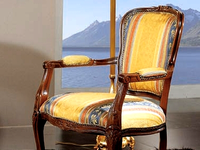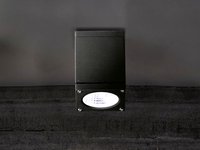RECOVER
wall
recessed / ceiling
suspended
surface / suspended
surface / suspended
UNICO
MOVE IT 25 system
VELA
MINO
Effi ciency and
sensor technology
Effi ciency and comfort through modern lighting control
A functional lighting system is of central importance for
patients and staff . For employees in healthcare facilities,
lighting must meet the requirements of the visual task
– from examinations to care and service to laboratory
activities. To ensure that patients feel comfortable in their
rooms, the lighting should both comply with standards and
also be individually adaptable. The lighting should also be
easy and intuitive to control.
This is where simple, self-explanatory operating devices
help. Special functions may not be immediately apparent
to the user, but they are all the more helpful for building
services. These include integrated power measurement,
system diagnostics, operating hours counters, and status
reports.
Light output as required
Large hospitals and care homes are busy around the
clock. In addition to medical equipment, lighting is a major
cost factor. Sensor-controlled luminaires increase comfort
and safety, and also reduce energy costs in the long term
by regulating light output as required.
Sensors measure movement and ambient brightness
and switch on the lighting only where needed. Modern
lighting management can control each individual luminaire
separately and thus dim or switch off the light in unused
rooms or in areas illuminated by daylight. In the case of
luminaires close to windows, this saves up to 50% energy.
Orientation lighting in corridors or staircases can also be
planned according to time of day and dimmed during quiet
periods.
Smart sensors contribute signifi cantly to patient recovery
by measuring important indoor climate values. Air humidity,
air quality, sound levels, and room temperature are all fac-
tors that infl uence the well-being of the people in the room
– which is particularly crucial when patients are in their
rooms for days or weeks at a time. If the room climate is
optimised based on these parameters, this can noticeably
shorten the recovery time and the stay in hospital.
Indoor climate analysis with IoT sensors
If the values are to be more than just a snapshot, an
extension with the DALI-controlled XAL's sensors is
recommended. These off er a comprehensive indoor
climate analysis. In this process, the measured values are
recorded and evaluated over a certain period, whereby
trends emerge. Analyses of the presence sensors record,
for example, the bed occupancy rate or the activity of pa-
tients, which in turn can be considered in cleaning or room
allocation. Based on indoor climate assessments, sensible,
cost- and time-saving plans can be drawn up for ventila-
tion or the operation of air-conditioning systems.
HCL: Faster recovery through
circadian daylight patterns
Patients recover more quickly the more comfortable they
feel in a healthcare facility. Suitable lighting systems
create a feeling of calm and security and support the
regeneration of body and mind by adjusting the lighting
to the needs of the human organism. Since patients and
residents often spend long periods in closed rooms, it is
essential to create lighting conditions that are as close as
possible to natural daylight.
Human Centric Lighting (HCL) is used for this purpose.
Dynamic colour gradients imitate the natural daylight
curve from cold white, activating light in the morning to
relaxing, warm white light colours in the afternoon and
evening hours. Slow dimming and gentle changes between
light scenes make the lighting pleasant and lively. Bright-
ness and lighting mood vary both from morning to night
and with the seasons. A modern lighting system's pre-pro-
grammed or manually controllable algorithms can equip
the lighting with diff erent curves and thus optimally adjust
the light to its natural equivalent at any given moment.
66
Healthcare facilities







